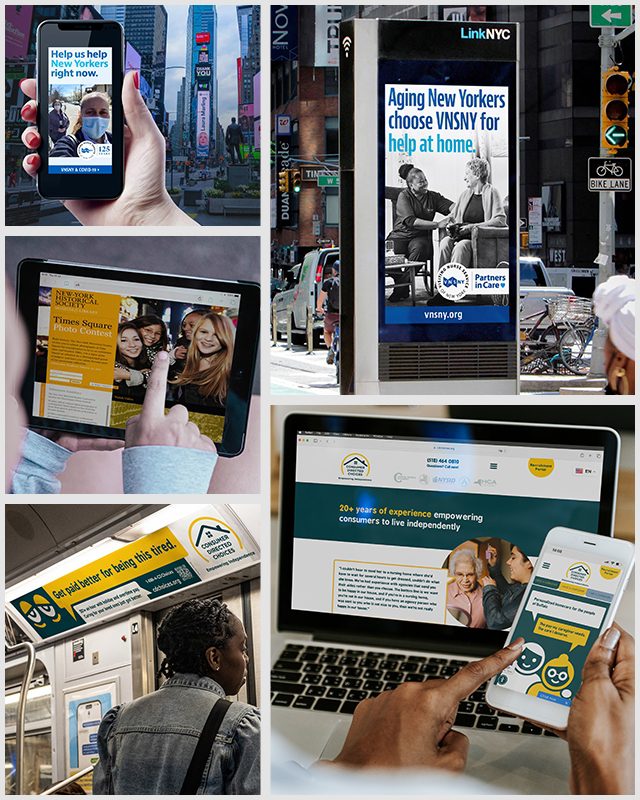
Practical Marketing Recommendations for Nonprofit Leaders
- Clarify Your Mission and Vision: Ensure they are concise, compelling, and consistently communicated. You have only a moment to click in a prospect’s mind, do not waste it with complexity that will only be ignored.
- Develop a Cohesive Brand Strategy: Utilize frameworks like Tronvig’s Brand Pyramid to distill your brand idea, value proposition and most importantly for nonprofits, your what.
- Align your brand strategy with operational reality: What matters with your brand promise is your organizational capacity to keep it.
- Maintain Consistent Messaging: Ensure all communications reflect a unified brand voice and narrative. This rigor is even more important for nonprofits because they are a “nice to have” from the donor’s perspective.
- Foster Internal Alignment: Regularly engage all stakeholders in organizational alignment so they can live up to the organizational values authentically.
- Remember that donors and funders are not the customer: All those who give you money must do so because the benefits you deliver to society are compelling. They should be thought of as your supporting customer. Your primary customer is always the beneficiary of your programs and services.
- Leverage Digital Platforms Strategically: Use social media to engage your supporters and to keep top of mind rather than making an ask.
- Prioritize Storytelling: Share impactful stories that humanize your mission and illustrate tangible outcomes that donors will remember you and be inspired to support.
- Invest in Team Development: Equip team members with skills and knowledge to carry out the brand promise. Mastery enhances motivation as much as passion for the mission, but do not forget autonomy. Clarity on the mission and a small set of Core Values will distribute decision making autonomy deep into the organization.
- Align Marketing with Organizational Goals: Ensure marketing initiatives directly support overarching strategic objectives. It is too easy to waste marketing dollars on misaligned or marginal passion projects.
- Monitor and Evaluate Impact: The good and the effective are not the same thing. Implement rigorous metrics that assess both quantitative and qualitative outcomes.
- Abandon what is not delivering stellar results: Everything that is not a stand out performer should be systematically abandoned. This is a profoundly difficult but essential challenge for nonprofits.



DCW
With offices in Manhattan, Long Island, and Denver, DCW Media has worked for 50 years on the front lines of emerging media. The largest privately held media buying company on the East Coast, DCW has for over ten years given Tronvig access to deep-seated using power and media spending of more than $100M annually. DCW works closely with us on media strategy and media buying so our clients get the benefits of being big when you need it to negotiate and buy media.
Tronvig
A boutique, we have nearly 30 years of brand strategy and advertising experience and an extensive network of creatives. This enables us to deliver world-class creative work economically. We can comfortably create and manage campaigns from one to ten million in annual spend.
The Essence of Nonprofit Marketing
Marketing in the nonprofit sector extends beyond the traditional confines of advertising and public relations. It encompasses the deliberate process of meaning-making, where organizations articulate their purpose, values, and impact in ways that resonate with stakeholders. This approach shifts the focus from transactional engagements to building enduring relationships based on shared values and mutual understanding.
As we have written, marketing is not optional; it is an essential tool for communicating what an organization does so that others will take interest, support, and advocate for it.
Building a Strong Brand Strategy
A robust brand strategy serves as the foundation for effective nonprofit marketing. It involves a clear articulation of the organization’s identity, encompassing its mission, vision, values, and unique value proposition. The Brand Pyramid framework, as developed by Tronvig Group, offers a structured approach to distilling these elements, facilitating internal alignment and coherent external communication.
By systematically addressing these components, nonprofits can establish a brand that authentically reflects their essence and resonates with their target audiences.
Internal Alignment and Organizational Culture
The authenticity of a nonprofit’s brand is contingent upon the alignment between its internal culture and external messaging. Discrepancies between proclaimed values and organizational behavior can erode trust and credibility. Therefore, fostering an internal culture that embodies the organization’s stated values is critical. This alignment ensures that staff and volunteers serve as genuine ambassadors of the brand, reinforcing its authenticity in every stakeholder interaction.
Marketing cannot work if it is disconnected from at organization’s internal reality.
If your staff is burned out, underpaid, or cynical, that is your brand. If your mission is aspirational but your behavior is petty, that is the brand. Marketing cannot conceal what the organization actually is.
Internal alignment—through clear mission, staff empowerment, and a vibrant and healthy culture—is foundational. Not peripheral.
Community-Centered Communication
Effective nonprofit marketing necessitates a shift from monologic dissemination to two-way engagement. This involves actively listening to stakeholders, co-creating initiatives, and fostering participatory relationships. Such community-centered communication strategies not only enhance relevance but also empower stakeholders, transforming them from passive recipients to active contributors in the organization’s mission.
Marketing becomes a form of community stewardship, not just a fundraising tactic.
Navigating Digital Saturation
We are all overwhelmed by content. In this environment, attention is sacred and fleeting.
Nonprofits must:
- Create fewer, better campaigns
- Prioritize emotional resonance over informational density
- Embrace brevity, clarity, and story
You are not only competing with other nonprofits. You are competing with Netflix, Instagram, and apathy born of exhaustion.
Metrics and Meaning: What to Measure
Success in nonprofit marketing must be measured differently in this new era. Instead of obsessing over impressions and clicks, we must track:
- Engagement quality: Are people staying, interacting, returning?
- Trust indicators: Sentiment analysis, community perception
- Behavioral shifts: Are we deepening relationships, not just acquiring names?
- Alignment metrics: Is what we say matching what we do?
Data without interpretation is noise. Measurement must serve mission.
Building Reputation
Reputation is a long game. It is the result of consistently living your values, treating people well, and communicating with clarity.
Nonprofit brands are inherently weak, but in a crisis, your reputation is your most valuable asset. In uncertainty, it is your competitive edge.
Invest in reputation not through PR, but through institutional coherence and behavioral integrity. Marketing should not sell a fantasy. It should illuminate the truth of the value you bring to the world.
Nonprofit Brand Strategy
It’s about what you do, why you do it, and how you do it differently from others. In other words, your brand has to be built on organizational strategy. The people on the inside – employees, donors, and other stakeholders – are just as important as customers, visitors, or prospects.





